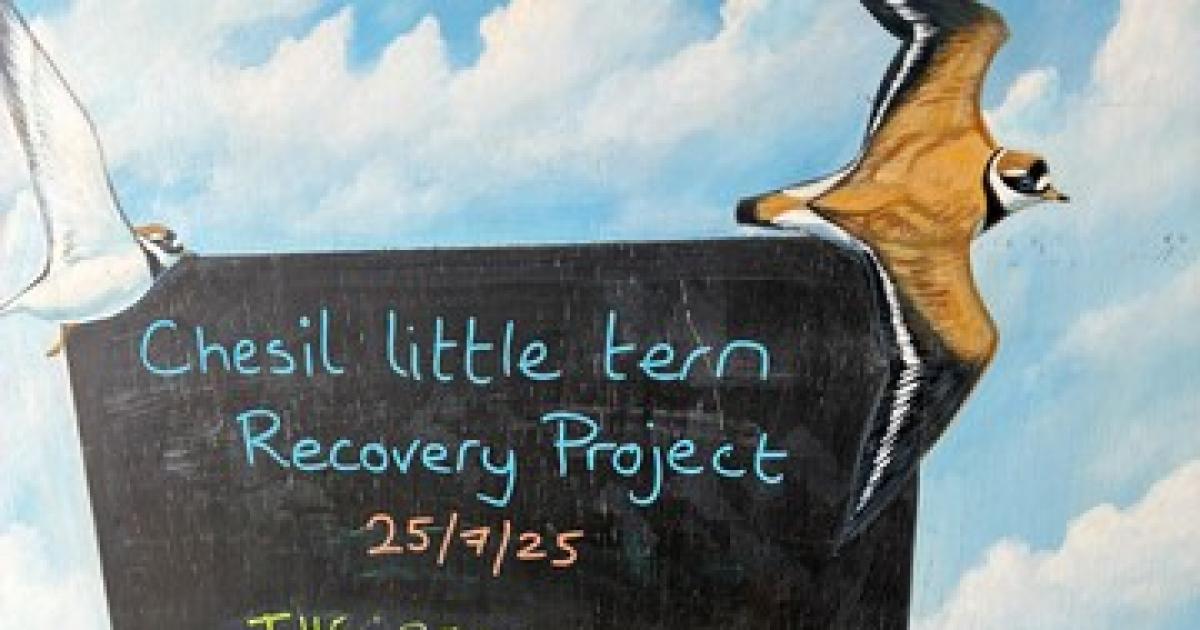Who would have thought the apparent unhospitable Chesil Beach has a population or hares and hedgehogs and, in the spring, is a nesting ground for the migratory Little Tern, increasingly at risk worldwide.
In the visitor centre there’s a sign which clearly says “please touch” with binoculars and a telescope on hand, without having to put money in a slot, to look out at the birds on the edges of The Fleet.
Here you can also watch the sealife on the underwater camera near Ferrybridge or book a trip on the glass-bottomed Fleet Explorer, operating on Wednesdays and Sundays.
If you are planning a visit my tip is to go on a falling or low tide as the mud/sand mix is wetter for and better for worms and other tiny creatures which, in turn, means more feeding birds.
All the Dorset Wildlife Trust staff and volunteers, as with other nature reserve sites, are super knowledgeable and friendly. Just pop in and say hello or book one of the many walks or activities they run.
This is very much a year-round reserve with the early season bird arrivals replaced later in the year, usually starting in September or October, with flocks of dark-bellied Brent Geese.
Also to be frequently seen are Oyster Catcher, Little Egrets, Ringed Plover and Linnets with some rarities from time to time who are essentially ‘blown in’ by the winds which rip over the Chesil Bank.
Younger visitors will love the touch table with egg cases (‘mermaid’s purse’), various skeletons and an enormous crab along with push-button displays.
The visitor centre is something of a ‘heart and minds’ operation, teaching about the importance of the area with staff playing a part in ‘educating’ dog owners about the harm letting their pets chase birds can cause and persuading paddleboarders that just the other side of the road, in Portland Harbour, is a better place to be.
Dorset Wildlife Trust are working at the site in partnership with others, including the RSPB on the Little Tern project, and the Illchester Estate and Crown Estate – each organisation raising the conservation profile and to help the public understand the importance of the place.
Around 50 active volunteers work in the centre and outside – with a spacious room which can be booked for educational activities and frequently hosts visits from local schools.
If you are interested DWT tend to recruit volunteers in the winter months with training offered ready for the main spring and summer seasons.
And while I, and possibly you, might have thought the area was pretty bereft of anything of interest the plants found here include Sea Thrift, Sea Campion, Sea Purslaine, Herb
Robert and Shrubby Sea Blite, of which there is a nationally important population – all, not surprisingly, are salt tolerant.
Another rarity at Wild Chesil is the rare scaley cricket which was first discovered in 1949 when a few females were found, followed a year or so later by the discovery of a handful of males. The species is only known to be at three UK site and unlike other crickets has no wings so does not make that distinctive sound, probably increasing their chances of survival.
Community Ranger Abi Mustard, who showed me round, has been at the site for 3 years after coming from another wildlife trust in Leicestershire.
With a degree in ecology from Aberystwyth she takes pride in her surroundings and is a worthy ambassador for all things Chesil, birds remaining her main interest.
“What a place to be working,” she says. You get the impression she can’t believe her luck.
Pics –
Community Ranger Abi Mustard
Chesil Beach – appears barren but supports hares, hedgehogs and rare plants
The Fleet – A nursery area for Sea Bass and other inter-tidal species
The Wild Chesil centre offers plenty for visitors to see and also hosts a café

